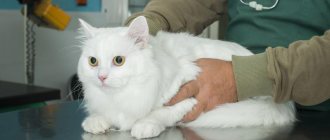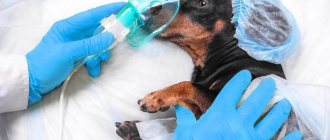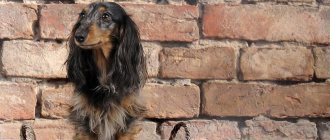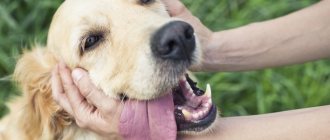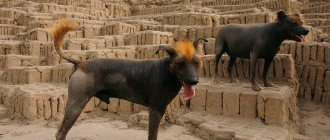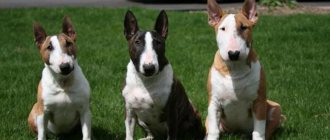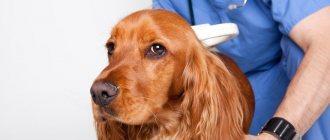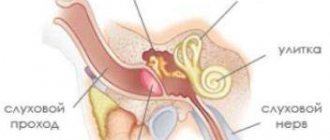Life with a snoring dog can be just as miserable as living with a snoring partner, especially when the dog is given the privilege of sharing a bedroom or even the same bed. However, it seems that when the snoring partner is a four-legged companion, dog owners are more forgiving and willing to turn a blind eye, or shall we say, deaf!
Many dog owners actually admit that they find their dog's snoring quite adorable, however, the spicy factor aside, snoring in dogs can sometimes be a sign of problems that need to be addressed. So, let's take a closer look at why dogs snore and how to recognize potential signs of trouble.
First introduction to dog snoring
Why do dogs snore? To understand dog snoring, we first need to take a little lesson in dog anatomy. When dogs sleep, they constantly pass air through their nose, soft palate, and trachea.
Generally speaking, snoring occurs when there is some kind of blockage in a dog's upper respiratory tract. As air flows unevenly past the clog, it creates a vibrating noise that we commonly call snoring.
In most cases, the noise occurs when the dog inhales air and can occur during any stage of sleep. There are several reasons why dogs snore.
Algorithm of actions for snoring in a pet
In order to get rid of an unpleasant physiological phenomenon of an animal, such as snoring, you need to perform the following list of actions:
- First of all, you need to pay attention to the comfort of the sleeping place.
- If the dog is taking any medications, they should be noted.
- If you suspect an allergic reaction, you can change your pet’s resting place, adjust its diet and replace its favorite toys.
- The process of walking the dog must be carried out in places where there is no significant air pollution with hazardous substances. This applies to both vehicle exhaust gases and gases that spread around large enterprises.
- If your pet is overweight, it is imperative to get rid of it. This can be done through diet and proper training.
It is necessary to feed your pet with high-quality food
Important! If you follow all the above rules, you can completely get rid of your dog’s snoring during sleep, or significantly reduce the severity of this physiological phenomenon.
Compliance issue
Some dogs are more prone to snoring due to their facial features. Brachycephalic dogs (dogs with a retracted muzzle) such as bulldogs, pugs, Pekingese and boxers are often pattern snorers.
While these facial structures are highly prized in the canine world for their urgency, they are also to blame for the noise they create.
The main problem is that these dogs have shortened snouts, which cause them to have trouble breathing, notes veterinarian Matthew Hoffman in Symptoms and Solutions: The Ultimate Guide to Home Health—What to Look for.
© shutterstock
These dogs' facial features are to blame: their elongated soft palate, which is sucked into the dog's airway, their narrow, slit-like nostrils, and their small trachea.
Some of these body abnormalities can be corrected surgically if they are interfering with the dog's overall ability to breathe.
Did you know? A sleep laboratory study of bulldogs found that most had some degree of sleep apnea. Sleep apnea causes them to wake up hundreds of times in one night, explains veterinarian Dr. Asaf Dagan.
How to help brachycephals
The anatomical structure created for human needs negatively affects the animal’s sleep. In order for your pet to snore less, you need to monitor the temperature in the room and not overheat it. The smells of tobacco and perfumes are harmful to animals.
You should not put a tight collar on a brachycephalic person, which would compress the throat and interfere with breathing. It is better to do without a traumatic harness, but to keep the animal at home without a collar at all.
Your pet needs regular checkups. You need to pay attention to the cleanliness of the nostrils, to the narrowing or openness of the channels. From time to time it is worth listening to the depth and frequency of snoring. If there are long periods of holding your breath or the sound of snoring is unusual, you should contact your veterinarian.
Interesting! A dog's natural snoring is beneficial for older people. At night, through their sleep, they hear their pet, the sounds calm the psyche. An elderly person does not feel lonely when falling asleep.
It's a matter of foreign bodies
While dogs' airways are sometimes blocked due to conformation issues, sometimes the culprit can be foreign bodies, basically things that shouldn't be there and that are inhaled or ingested from the environment.
If your dog has never snored or snored very little in his life and now snores like a chainsaw, check for a foreign body, especially if he shows signs of difficulty breathing, repeated sneezing, coughing and vomiting even while awake.
What foreign bodies are to blame? One insidious foreign body that can enter a dog's respiratory tract is foxtail, a barbed spikelet formed by several herbaceous plants. Because foxtails typically only move in one direction, removal must be performed by a veterinarian. Other possible foreign bodies include grass awns and pieces of sticks if dogs like to chew on them.
Yorkie's musculoskeletal system
The fragile skeleton of this breed is susceptible to several diseases.
With congenital displacement of abnormally formed joints of the limbs, both one and both hind limbs can be affected.
This breed disorder is considered one of the most common today.
Patella luxation is a congenital condition in Yorkshire Terriers. Essentially, this is a sprain or eversion of a joint (violation of its position), sometimes accompanied by rupture of ligaments. May develop into osteoarthritis.
Despite the nature of this sore - hereditary - protect your dog from jumping and injury; Yorkies have very weak ligaments.
As sad as it is to admit, most modern Yorkies have a congenital median dislocation of the prominent lobes of the joints (the same patella).
Hereditary dislocation of the elbow , as a rule, occurs due to torn or stretched ligaments in the neighborhood. The outcome of the disease is the same as with dislocation of the calyx, only in relation to the forelimb.
Another breed problem is separation of the femoral head . With this diagnosis, the epiphysis spontaneously separates from the apophysis along the epiphyseal plate, which in turn is responsible for the development of the femur.
The main symptom: the dog is limping more and more intensely, and may not step on its paw at all. Another sign is that the Yorkie places the sore paw at an acute angle to the healthy one.
It is not uncommon for Yorkshire Terriers to suffer from separation of the head of the humerus. The same thing is observed, only for the forelimbs.
The causes of this disease are unknown. Possible causes include the dog’s misuse of vitamins and minerals.
Legg-Calvé-Perthes disease , or aseptic necrosis of the femoral head .
Yorkies under the age of one year are susceptible to it (mostly at 5-10 months), and manifests itself at 3-5 months.
Yes, Perthes has heredity, but the causes of this disease are completely unknown not only to veterinarians, but also to human doctors.
“Officially” - the blood supply to the bone tissue is disrupted, as a result of which it becomes dead and dissolves. That is, the bone of the head and neck of the femur is destroyed without an inflammatory process.
Symptoms are expected: pain when moving the hip away from the body, lameness, muscle atrophy. Surgical treatment is prescribed after x-rays of the hip joints.
Tendency to fractures . Seriously, it's innate in Yorkies.
They can break from things that other breeds are unlikely to break: a jump, a sprain, a minor fall.
Atlanto-axial instability sounds unclear and indicates pathological mobility between the 1st and 2nd cervical vertebrae of the Yorkshire Terrier.
The root of the evil is usually a congenital underdeveloped 2nd vertebra or ligamentous apparatus, rupture of ligaments due to injury or fracture of the vertebrae.
Any damage to the atlantoaxial joint puts pressure on the dog's spinal cord, causing neurological disorders: neck pain, decreased sensitivity, weakness of muscles and limbs, ataxia (discoordination).
Impaired ossification of the frontal bones (in fact, non-overgrowth of the fontanel ). Soft area at the border of bony sutures in a newborn puppy. In rare cases, there may be several fontanelles.
In weakened babies, this tissue ossifies up to 7-10 months, in healthy ones - even faster. If the fontanel has not healed before a year, there is almost a 100% chance that it will remain soft forever.
Tracheal collapse is a sharp spasm of the pharynx , resulting in difficulty breathing and suffocation.
Almost all dwarf dogs suffer from this terrible disease. It occurs due to poorly developed (soft) cartilaginous half-rings of the pharynx.
The reasons for the latter are breed, young age, regular pressure collar, metabolic disorders.
What to do : do your best to protect your Yorkie’s delicate skeleton from damage; He's had enough of congenital problems with bones and cartilage. Do not allow your dog to jump from a height (even from your hands) or get injured at all, so as not to cause serious complications. And, of course, any situation requires a private approach: from medication to surgical treatment.
The problem is the disease
Any condition that causes inflammation, swelling, or mucus production can cause snoring in dogs. For example, the cause could be an upper respiratory tract infection or an allergy.
While most dog allergies result in skin problems, about 15 percent may have the same symptoms that humans experience, such as sneezing, nasal discharge and watery eyes.
Allergies can be caused by anything in the environment, but the most common culprits are dust, pollen, mold, dander and smoke. When the nasal passages become clogged with mucus or become swollen, dogs may begin to breathe through their mouths, which can cause noisy snoring, Dr. Ackerman further explains. Sometimes snoring can be caused by a fungal infection of the nose.
Common reasons
The most common causes of canine snoring are:
- Natural weakening of the laryngeal muscles during sleep. This reason usually happens in older dogs.
- Incorrect bite or jaws that are too tightly clenched during sleep.
- Too plump neck.
- Runny nose, nasal congestion.
- Retraction of the tongue in the throat.
- Excess body weight.
- Allergy.
- In addition, quite often an animal can snore in a smoky room.
It's all about the extra pounds
Just as overweight people are known for "heavy breathing and snoring," when a dog packs on extra pounds, snoring can be just as noisy. But why do chubby dogs seem to snore more? In this case, it seems to be a matter of where their fat is stored.
This extra layer of fat, found in a dog's chest, can put pressure on the dog's airways in certain sleeping positions, causing noise, explains veterinarian Lowell Ackerman.
Fortunately, a weight loss program can ultimately reduce snoring, as well as provide several other beneficial benefits that come with shedding a few pounds.
Tracheal collapse
One of the unpleasant pathological processes, characterized by sudden and unpredictable development. With tracheal collapse, the trachea begins to shrink and decreases in size, in some cases to such a size that complete obstruction occurs. When its lumen decreases, the dog grunts, wheezes, wheezes and even “quacks.”
But such symptoms are far from amusing, since the dog feels bad, is suffocating, and keeps its mouth constantly open. Upon examination, you can find that its mucous membrane becomes blue or plum-colored, which indicates severe oxygen deficiency. If this condition persists for some time (from several minutes, and sometimes even hours), the dog may fall into a coma or, after recovery, will suffer from periodic seizures.
It is not recommended to delay medical help, as if the pet’s condition worsens, a tracheostomy may be required, otherwise he will not have a chance to survive. In this case, the surgeon makes a neat incision in the walls of the trachea, and then inserts a special tube into the resulting lumen. This procedure is called intubation, after which the animal is able to breathe fully and avoid the risk of suffocation.
But if the development of tracheal collapse is associated with any serious pathology, and the tracheal rings are severely damaged, the surgeon performs a more complex surgical intervention. During this operation, worn areas are replaced with implants made of synthetic materials. They will last a long time and the dog will not have difficulty breathing.
In the practice of foreign veterinarians, there are already several successfully performed operations to completely replace a damaged trachea with an artificial analogue. Such treatment is recommended for dogs whose disease is caused by a strong hereditary predisposition or autoimmune pathology. In such situations, replacing individual rings is only a temporary measure, since the remaining part of your own organ will still be attacked by the immune system and will be destroyed.
Emergency help
Depending on the severity of the dog’s condition, emergency treatment is divided into surgical and medical.
Surgical assistance
An unscheduled operation is performed in emergency cases when it is necessary to save the dog. Most often, this operation is performed when a pug is diagnosed with suffocation due to brachycephalic syndrome. In this case, the veterinarian performs a tracheostomy - an incision in the trachea in the throat area so that the pug can breathe freely.
Drug therapy
If the dog’s condition is not critical, the doctor is limited to the following measures:
- decrease in body temperature;
- hormonal steroid therapy;
- sedatives;
- oxygen inhalation.
All these measures help stop the attack, but do not save from its recurrence in the future. After emergency assistance is provided, the owner is advised to think about operating on the pet. This will help the pet live to a ripe old age, protect it from suffocation in the future, and maintain the health of the heart muscle.
